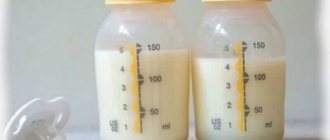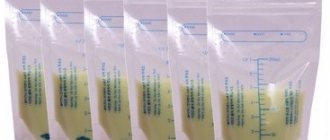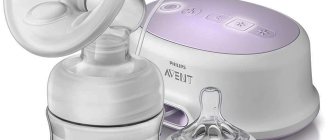VK
Buffer
Breastfeeding is so simple and so difficult. Trying to give the baby the maximum of what nature provides, we carefully monitor the quantity and quality of breast milk: is it enough; breast milk became like water, why; shouldn't it be thicker? Young mothers are especially worried when they notice that for some reason their breast milk is clear and not at all fatty. What to do in such cases? Is this a cause for concern, or does the degree of richness and thickness of the milk not affect its composition and benefits?
Colostrum color
Colostrum changes color after childbirth: from dark to light.
The female body begins to prepare nutrition for the unborn baby immediately after conception. Gradually, the mammary glands are rebuilt for lactation. Sometimes yellow spots appear on the bra, although there is still a lot of time left before the birth - this is the first production of colostrum. The main part of it is formed after the completion of childbirth.
Colostrum is the liquid that is secreted by a woman’s mammary glands in the first days after childbirth. It is distinguished by its thickness and yellow (cream) tint. Sometimes only a few drops of colostrum are released, but the baby does not require a significant amount of nutrition in the first hours of life, the main thing is fat content and richness.
After 2-14 days, the nutritional fluid changes: the color of breast milk becomes lighter and more transparent. There is no need to worry about this.
Hind and foremilk
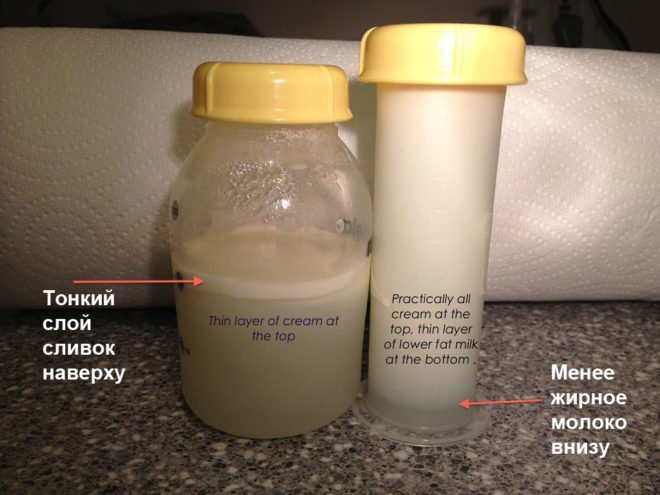
If you look at expressed milk that has stood in a transparent container, it will appear stratified into a translucent liquid below and a thick layer (cream) on top. Don't worry if there is not enough cream.
During feeding, with the first sips, the baby receives a pale, watery mixture - foremilk. Subsequent portions become fattier and thicker - this is hind milk. Its color is closer to cream.
Foremilk, watery, fills the baby's body with liquid, and hindmilk - with nutrients. It is important to use both types.
If the baby sucks on one breast for a long time, do not rush and offer the next one. The baby may not receive enough fatty hind milk, which will negatively affect weight gain. Sometimes it seems that there is nothing else in the chest, but the baby continues to suckle - it is worth giving the baby time to completely empty it. It is more difficult for a baby to obtain hind milk than fore milk. Sometimes this takes 20-40 minutes. It is important to be patient.
Healthy milk color
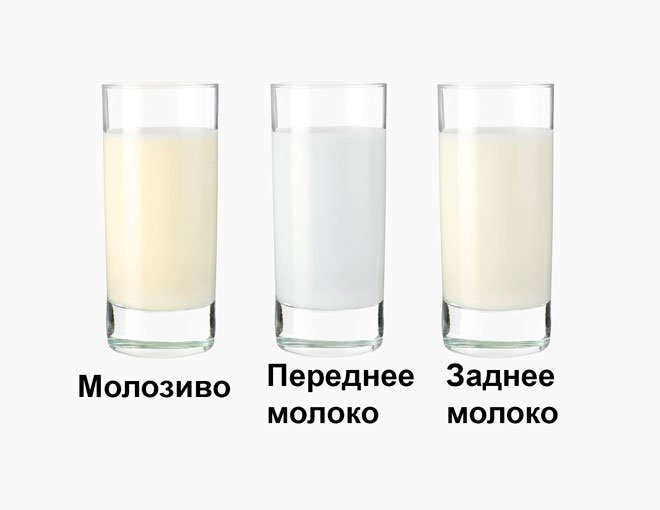
The color shade of milk is a variable characteristic. It changes during feeding, during the day and as the baby grows older.
Clear-colored breast milk is just as healthy as cream-colored breast milk.
Yellow color makes it clear about the presence of proteins and fats. They are necessary to saturate the child. Blue milk is no less important - it only seems useless, but it contains carbohydrates and water. Children under 6 months of age do not need to be given additional fluids, since foremilk replaces it. After six months, the composition and color of the milk changes as the child matures. He begins to eat complementary foods, and the mother’s body reacts to this by changing the nutrient fluid.
If the mother is worried that the baby is not eating enough, it is worth offering him the breast a little more often. It is important that the child empties it completely, reaching the fatty rear part.
Expert opinion
Sokolova L. S.
Pediatrician of the highest category
Only one breast should be given to the baby at one feeding. Otherwise, he will easily suck the foremilk from both mammary glands, but at the same time he will remain half-starved.
What should breast milk look like?
Every mother who is just starting to breastfeed her baby is always interested in what the milk should be like and what color it should be. Naturally, for this it is necessary to express it and evaluate the shade. In most cases, it turns out that only after visually assessing the resulting product does the mother conclude that it is of poor quality. But you can’t judge quality by external parameters. Quite often, the wrong conclusions of young women lead to them completely refusing to feed the child. This cannot be done, as the baby needs to be breastfed.

Regardless of what milk looks like, rest assured that it is the healthiest product in the world for your baby, since you were the only one who was close throughout pregnancy and right up to the birth of the baby. Therefore, your body produces a substance that is beneficial to the baby’s body.
In addition, you need to know that milk is a product that is constantly subject to change. So, over the course of several feedings, its composition may be slightly modified. The same goes for color. Basically, the milk that the baby drinks at the very beginning of feeding has a slightly bluish color. This indicates that the baby is consuming so-called foremilk. And when the substance your baby consumes changes to yellow, you should know that he has reached the fattest product, which is called the rear. This is the most useful part, as it contains many useful substances.
As the child grows, the composition of the milk also changes. This is caused by changes in your baby's needs. As soon as mother and child begin to get sick, this substance becomes rich in completely different enzymes, which make it possible to protect the baby from possible infection. As for color, quite often its color depends on what the young mother eats. During this period, the baby’s body begins to prepare for more serious complementary foods.
Quite often, depending on what the mother drinks, this substance can take on a completely different color. When consuming a huge amount of foods rich in carotene, it can be either yellow or deep orange. When consuming foods with a high content of dyes, you may notice a slightly pink tint. But a green product can be obtained when the mother’s body receives a lot of vegetables and foods with green dyes.
What can affect color
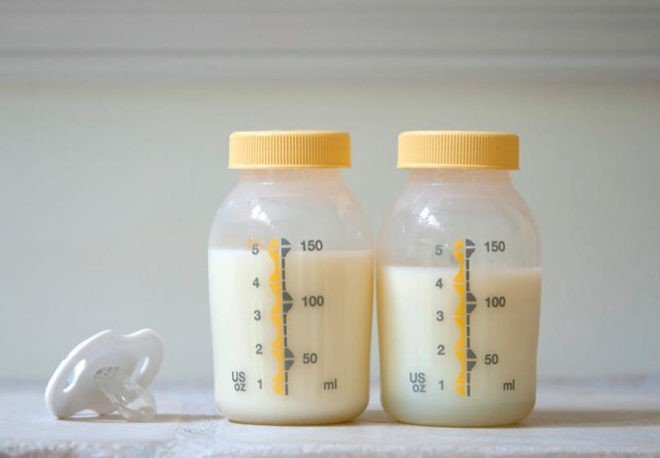
Chemical elements from foods eaten by the mother enter the milk, so its composition is always different.
Reasons for milk coloring in different shades:
- orange - a woman eats a lot of foods with carotene, for example, carrots, pumpkin;
- pink - the influence of dyes from lemonade, jelly;
- green – consumption of a significant amount of green vegetation, drinks tinted with food coloring;
- blue – blueberries, blueberries and other berries can give milk a blue color;
- gray, black – drinking cola-based carbonated drinks. Certain medications can turn milk dark gray, almost black.
Normal milk is clear or thick and may have a yellowish or bluish tint. Don't worry about this. It’s another matter if red streaks are noticed in the milk. More often this occurs due to damaged blood vessels and cracks in the nipples. Such nutrition is acceptable for a child, but the mother needs to consult a gynecologist to eliminate the problem.
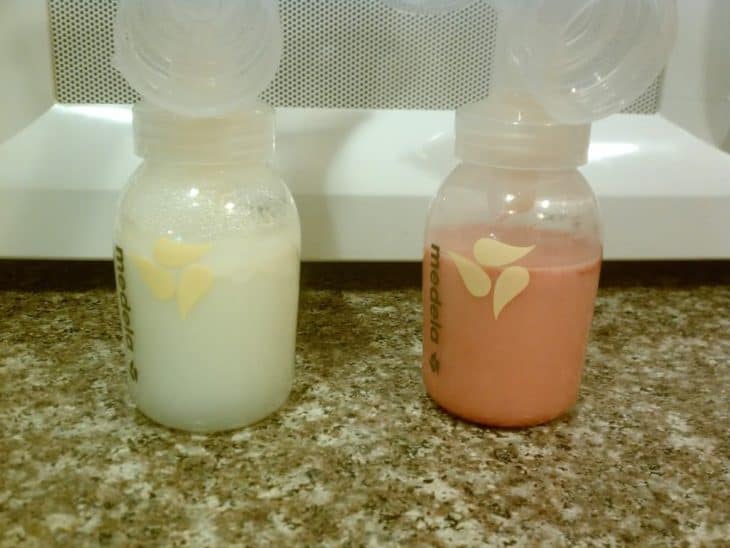
Why is breast milk yellow? If the child is not capricious and has normal bowel movements, there is no need to worry. But if, despite the presence of yellow streaks in mother’s milk, the baby’s stool becomes liquid and green in color, this is a reason to consult a doctor.
Most likely, mom has mastitis. It is accompanied by chest pain, body aches, drowsiness, and fever. You can check this by expressing milk onto a cotton pad. The liquid will be absorbed, normally the disc should remain clean. If yellow veins are visible on it, often with an unpleasant odor, go to the hospital immediately.
The development of mastitis is not a reason to stop breastfeeding. Modern medications can quickly solve the problem. The attending physician will develop an individual treatment plan that is compatible with feeding the baby.
Milk research
You can make sure that everything is fine with the milk or, conversely, there is pus or blood in it, through laboratory testing.
Milk must be collected correctly:
- wash your breasts;
- wipe dry;
- wipe with a semi-alcohol solution;
- express milk before feeding (the first drops on a napkin, the rest in a sterile container);
- submit the analysis within two hours from the moment of pumping.
A referral for examination is given by a pediatrician or therapist. There are laboratories that perform the procedure for a fee (without a referral). There is no need to draw conclusions based on the color of milk yourself. This should be judged by a specialist, not a friend, mother or grandmother.
Pus in milk
With purulent mastitis, pus may be discharged into the thoracic ducts.
According to WHO recommendations, it is possible to feed a child with breast milk from the affected gland, but if there is a high content of pus in the milk, children in the first months of life may experience problems with stool. If during the period of treatment of purulent mastitis there is no pediatrician or obstetrician-gynecologist near the nursing woman who has the knowledge and experience in establishing breastfeeding for purulent mastitis, it is better to refuse feeding from the diseased gland. Careful, regular, frequent pumping will help maintain lactation and prevent damage to other lobes of the gland. A greenish tint to the milk may occur if the baby has not been put to the breast for more than 12 hours. A woman can express it, but it is safe for the baby. It is possible to increase the volume of hind milk consumption only by frequently putting the baby to the breast; long breaks between feedings do not contribute to the accumulation of “fat” milk, but can provoke lactostasis or mastitis.
Color of milk upon cessation of lactation

WHO recommends not stopping lactation until two years of age. Typically, women prefer to breastfeed until one year of age. When your baby rarely nurses, the fluid in the breast becomes thicker. The color of breast milk at the end of lactation is white or yellowish, but this is not necessary. The decision to stop feeding should be deliberate and not depend on the color of the milk. It’s good when the baby weans off the breast on his own, but this rarely happens.
When not to suddenly stop breastfeeding:
- summer - the baby needs a lot of fluid, he may completely refuse regular food;
- illness of the child - mother’s milk is important for maintaining immunity and for calming and distracting the baby from pain and discomfort;
- lactostasis - if milk stagnates in the breast, the child can best pump it out naturally;
- teething - mother's breasts are an excellent massager for swollen gums, milk relieves inflammation and calms irritability.
There are children who, during teething, can sleep only by calming themselves by sucking their mother's milk. When the teeth erupt, the child will switch to regular food on its own. Usually all teeth appear by two years. It is not for nothing that WHO recommends maintaining breastfeeding at least until six months of age, and the longer the better [1].
Factors influencing the composition
The constituents of breast milk change frequently. It depends on the baby's development process.
Primary milk or colostrum is usually yellow in color. It contains a high concentration of protein. At the same time, the amount of lactose and fat in it is very small.
Mature secretion, unlike primary secretion, is enriched with minerals and vitamins. It is higher in calories.
Expert opinion
Morozova Tatyana Evgenievna
Pediatrician. Lactation consultant.

